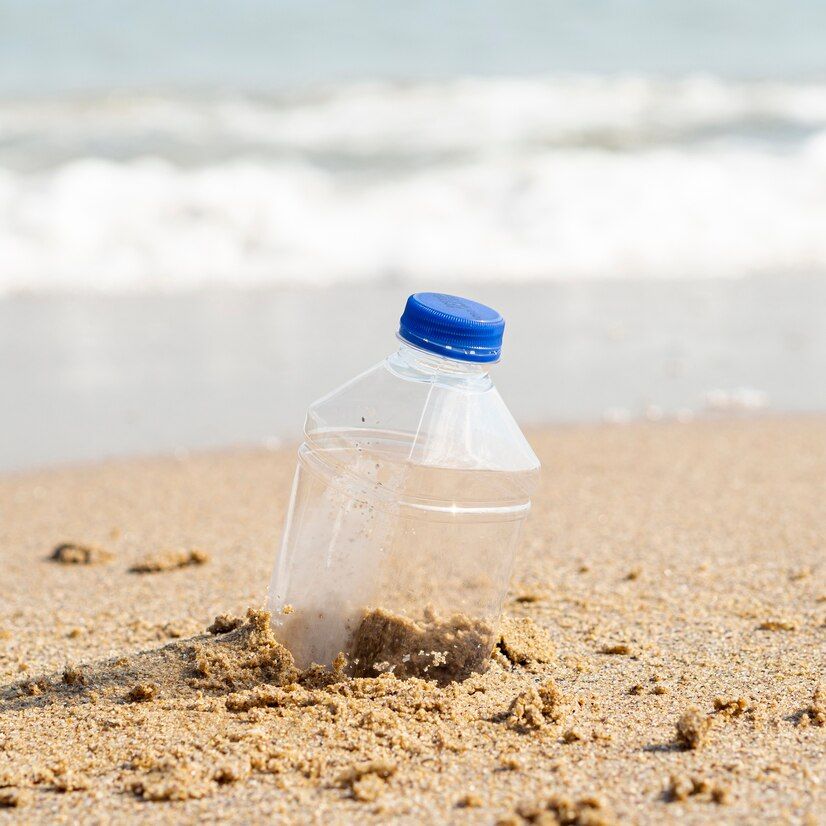Promotional products have long been a marketing mainstay, but their environmental toll is becoming hard to ignore. Let’s dive into why these popular items might not be as green as we’d like.
Key Findings:
- Traditional promotional products often use non-degradable plastics.
- Manufacturing processes release harmful gases and are energy-intensive.
- Many such products have a short lifespan, quickly ending up in landfills.
- Limited recyclability due to mixed materials in products.
- “Greenwashing” tactics mislead consumers with unsubstantiated eco-claims.
Common materials used and their environmental impact
Let’s begin by finding out what materials are used in traditional promotional products. We will also learn about their impact on the environment.
Plastics: A dominant material in promotional items due to its durability and cost-effectiveness. However, plastics present a significant environmental challenge. Plastic items can stay for a long time before breaking down. Making them also releases harmful gases.
Inks: Used extensively for branding on apparel and printed materials, certain inks contain volatile organic compounds (VOCs). When these VOCs evaporate, they cause air pollution, which affects the environment and human health.
Metals: Materials like aluminium, steel, and copper find their way into promotional items such as keychains and badges. These metals can be recycled, but extracting and refining them can harm the environment. This can cause habitat destruction, soil erosion, and water pollution.
Production processes and the carbon footprint of mass production
Creating promotional products has multiple steps, each with its environmental impact. Let’s break down the key processes and their impacts:
Raw Material Extraction
Before manufacturing can even begin, raw materials must be sourced. This extraction, especially for non-renewable resources, can be harmful. This process often causes trees to be cut down, disrupts habitats, and uses a lot of water and energy.
Refining and Processing
Once raw materials are extracted, they undergo refining and processing to be made usable. This step is particularly energy-intensive, especially for metals. Refining raw materials can release harmful gases into the air and create waste that must be disposed of carefully.
Manufacturing
Promotional products are made using machines that usually run on fossil fuels. This not only consumes a significant amount of energy but also releases greenhouse gases. The manufacturing process can create waste, especially if quality control rejects some products.
Short Lifespan and Landfill Impact of Traditional Promotional Items
Promotional items, made to increase brand visibility, usually last less time than other products. This transient nature, combined with certain materials used, can have significant environmental repercussions.
Short Usage Cycle
Many promotional items, especially those given away at events or conferences, are used briefly and discarded. Whether it’s a branded pen that runs out of ink or a tote bag that wears out, the short usage cycle means these items quickly become waste.
Non-Biodegradable Materials
Many promotional products are made from materials that take time to break down. Plastics and metals that don’t break down can stay in the environment for hundreds of years. When thrown away, they don’t go back to the earth. Instead, they build up and harm the environment.
Landfill Overflow
Due to their short lifespan and the sheer volume produced, many promotional items end up in landfills. These landfills are rapidly filling up, leading to the need for more land to be allocated for waste. As these products break down, they can release harmful chemicals into the soil and groundwater.
Limited Recycling Options
While recycling is a potential solution, not all promotional items are recyclable. Some materials, plastics, and small items cannot be recycled because they are mixed or too small. As a result, even items that could be recycled often end up in landfills.

Why are promotional items hard to recycle?
Many promotional items are crafted from a blend of materials. Think of a pen with a metal clip, plastic body, and rubber grip. This mix can make the recycling process complex. Many recycling facilities can only handle one type of material, so items with different materials may be rejected.
Greenwashing Tactics
In the race to appeal to eco-conscious consumers, some companies might take shortcuts, leading to what’s known as “greenwashing.” Let’s explore this deceptive practice further.
Unsubstantiated “Eco-Friendly” Labels
It’s become increasingly common to see products labelled as “eco-friendly,” “green,” or “sustainable.”
However, in some cases, these labels are slapped on without any substantial evidence or certification to back them up. If claims aren’t verified, they can mislead consumers and give a false sense of eco-responsibility.
Misleading Eco-Claims
Beyond just labels, some products boast specific environmental benefits, like being “biodegradable” or “made from recycled materials.”
Yet, on closer inspection, these claims might only apply to a small part of the product or under specific conditions. Such partial truths can divert attention from the larger environmental impact of the product, leading consumers astray.
Did you know?
Payless Promotions’ eco-friendly range of promotional products includes at least one eco-friendly factor:
• Made from natural or recycled materials
• Reusable and replace single-use products
• Biodegradable
• Manufactured with certification from environmental accreditors
In a world where genuine eco-efforts are crucial, greenwashing muddies the waters. It underscores the importance of consumer vigilance and the need for transparent, verifiable eco-claims in the promotional products industry.
Wrapping Up
Promotional products have long been practical tools in branding and marketing.
While there are environmental concerns with some traditional materials and practices, awareness is the first step to improvement.
By understanding the nuances and being vigilant against misleading claims, businesses and consumers can pave the way for a more sustainable promotional industry.
